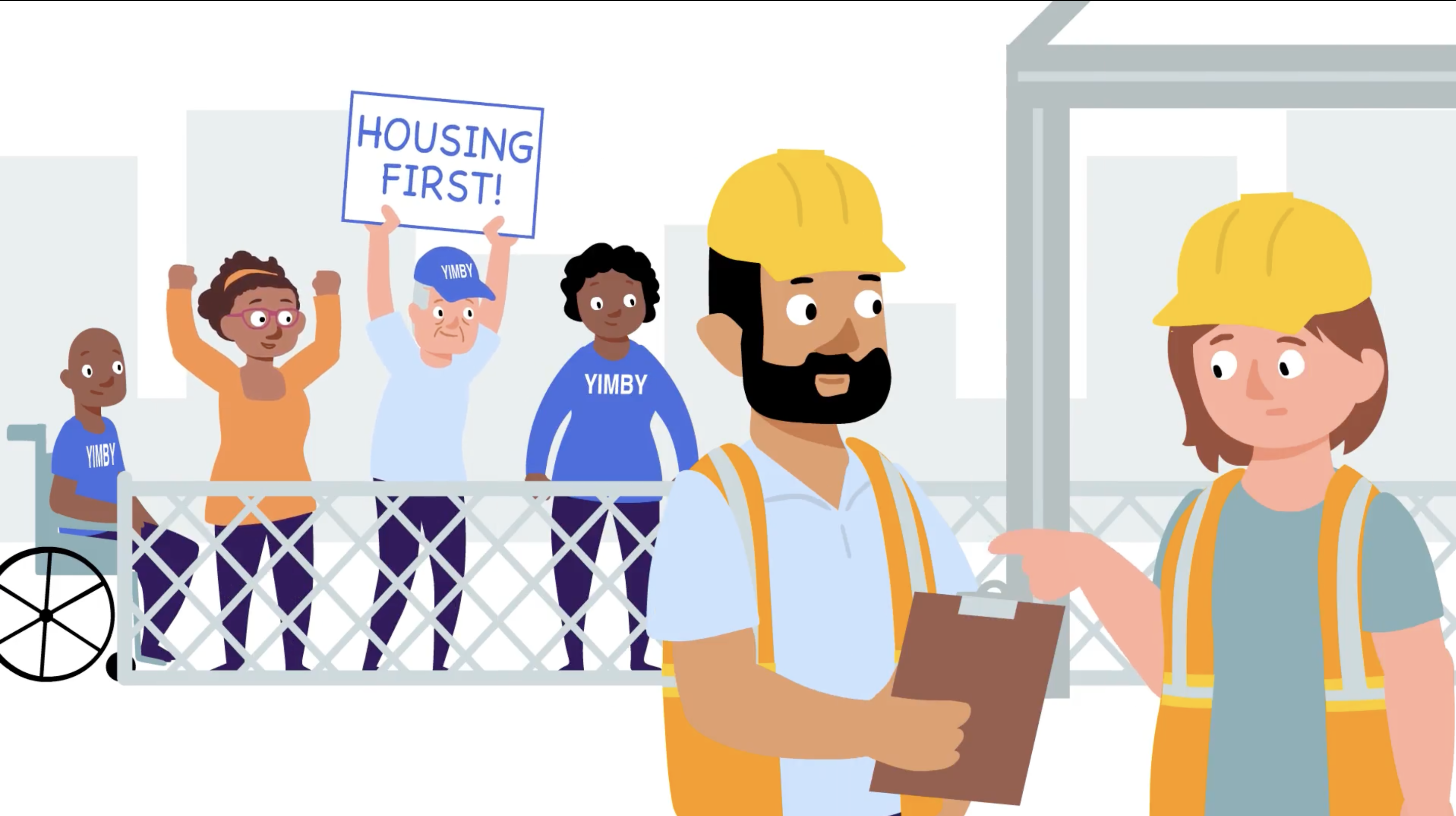While California is home to only 12% of the U.S. population, a startling 30% of the nation’s unhoused population lives in the state. From an outside perspective, California appears to be taking preventative measures, pouring $17.5 billion into combating homelessness over the last four years.
However, the Golden State still struggles to house its citizens: homelessness rose nearly 6% in 2023. Major cities like Los Angeles and San Francisco have tried to adopt housing-first initiatives, which provide individuals with the unconditional offer of permanent homes.
Such programs have worked well in other cities—but only when coupled with efforts to build a lot more housing. That is due, contrary to common myths about our unhoused neighbors, to the primary cause of homelessness being a shortage of housing. The reason so many people are living on the street, in their cars, and under freeway overpasses across L.A. County, and throughout California, is that there are not enough homes for everyone who needs one.
High Rent Prices and Homelessness: A Clear Correlation
Housing and rent prices throughout California have been on the rise for years. California has the highest share of residents in the US who are considered “rent burdened:” According to the Public Policy Institute of California, “More than half of the state's renters—and four in ten mortgaged homeowners—spend 30% or more of their household income on housing.”
According to one Zillow study, homelessness tends to rise in communities where rent exceeds 22% of an individual’s income on average. Harvard University’s Joint Center on Housing Studies supports these findings, identifying an obvious correlation between a city’s median rent and its homelessness rate.
Due primarily to the state's strict local regulations that prohibit new homes in most urban areas, California has long lacked an abundance of affordable homes. This is a particularly egregious problem in major cities like Los Angeles, where zoning restrictions, lengthy and costly permitting processes, and other factors stymie new construction – and drive up the cost of new housing.
As a result, the number of available homes is not keeping up with the growing population. “Naturally” affordable homes and subsidized homes are few and far between, with wait lists for the latter often lasting up to five years.
These rent burdens, high housing costs, onerous permitting and zoning restrictions, and long wait lists for subsidized housing cause the most harm to the most vulnerable tenants – many of whom are seniors on fixed income, or disabled residents who can’t work. And when they get struck by a single calamity – an unexpected medical bill or illness, the loss of a job or care-giver, even just a missed rent payment – they can find themselves out on the street.
But people who have lost their homes to what essentially amounts to bad luck don’t deserve to be treated like criminals. Unfortunately, that’s what too many cities, including Los Angeles, end up doing. Which only exacerbates the problem.
Where California’s Housing First Approach Fails
In order to address the growing issue of homelessness, many cities have adopted a housing-first approach. In comparison to treatment-first models, which require unhoused residents to complete mandatory mental healthcare or addiction counseling before receiving homes, housing-first models unconditionally provide permanent housing.
Programs may offer wraparound services like counseling and therapy when needed, but the first priority is the housing of citizens.
There is ample historical data pointing to the efficacy of housing-first approaches. Columbus, Ohio, was among the first U.S. cities to adopt a housing-first approach. In 2000, the city began building permanent supportive housing and removed barriers such as income and sobriety requirements, resulting in a 70% success rate for housing outcomes. By following a housing first approach, Utah saw a 91% decrease in its unhoused population from 2005 to 2015.
More recently, this model has seen remarkable success in Houston, Texas. From 2011 to 2020, Houston housed more than 25,000 formerly unhoused individuals. However, implementing these approaches in California has proven difficult.
In too many California cities, it is illegal to build more homes on more than 75% of the urban land.
Los Angeles’s zoning laws are particularly convoluted. For example, in 2016, Proposition HHH passed in L.A. This allowed the city to borrow $1.2 billion to create 10,000 permanent homes for unhoused residents; but the program fell far short of its goal.
By 2020, only 1,142 units were ready for use. The average waiting period to start construction on HHH projects was 900 days. Additionally, in many areas of L.A., local officials have veto power over any new housing projects. Even approved HHH houses failed to come to fruition.
In Houston, by contrast, nearly all permitting is done “as of right,” which means development can proceed under zoning ordinances or by-laws without the need for any special permitting, waivers, discretionary approval, or similar red tape. This streamlined process allowed the city to build homes fast. In 2019, Houston built the same number of apartments as L.A. – despite L.A.’s population being twice as large.
So, What Can We Do?
There is no one-size-fits-all solution for homelessness, but the success of cities like Houston and Columbus illustrates that building more affordable homes, quickly, can begin to chip away at the problem. To see similar results, California will need to make some major changes.
Housing-first programs need to be funded permanently.
In many metropolitan areas, programs are funded on a one-time basis and require reauthorization with every budget cycle. This uncertainty makes developers hesitant to take on new projects, whereas permanent funding creates stability by incentivizing the creation of new homes.
California's cities also need to relax zoning laws and eliminate unnecessary red tape. Not only does Houston have much laxer zoning restrictions, but combating homelessness is overseen by a single body, the Coalition for the Homeless of Houston/Harris County. Similarly, Columbus has a Community Shelter Board coordinating all regional service providers and controlling the city’s homelessness response budget.
By contrast, California cities often have highly fragmented service systems where communication is convoluted and authority is unclear. California should look into state-and-citywide housing-first approaches similar to those in Houston and Columbus.
Lastly, criminalizing homelessness needs to stop.
In the 2018 case Martin Vs. Boise, the Ninth Circuit Court of Appeals ruled that unhoused people could not be penalized for sleeping outside if they lacked alternative accommodations, including temporary shelters.
Martin Vs. Boise should not just be codified but strengthened. Rather than relying on temporary shelters, cities should be required to provide permanent or transitional housing, ensuring eliminating encampments means eliminating (and not punishing) homelessness.
The Bottom Line
While California’s housing crisis is a cause for great concern, there is hope.
Cities such as Houston and Columbus clearly illustrate that a housing-first approach, when implemented correctly, works. The creation of more permanent, affordable housing is similarly the best way to reduce homelessness in California.
Specific laws and regulations make implementing similar programs difficult – but not impossible. Committing to a series of proven reforms that can be passed at the city and state levels can help the state successfully create housing-first initiatives that get residents off of the street – and into permanent homes.
For more information, check out this California YIMBY report on how housing abundance can end homelessness.
This is a sponsored article published in collaboration with California YIMBY.





